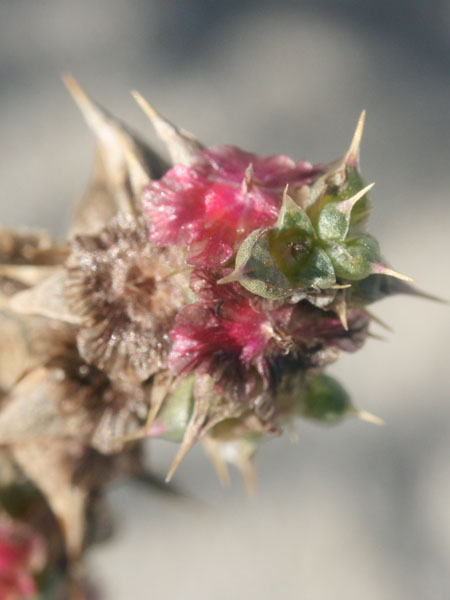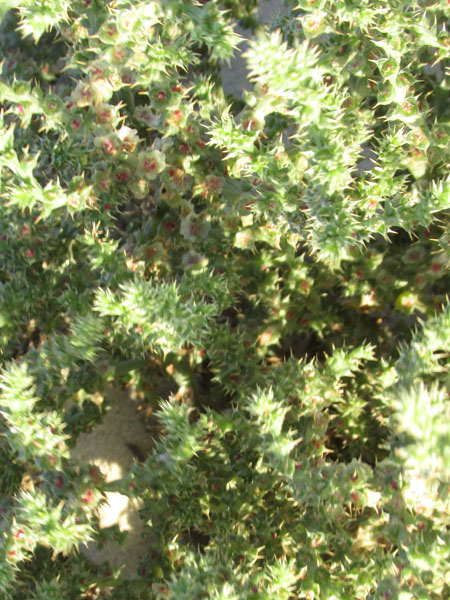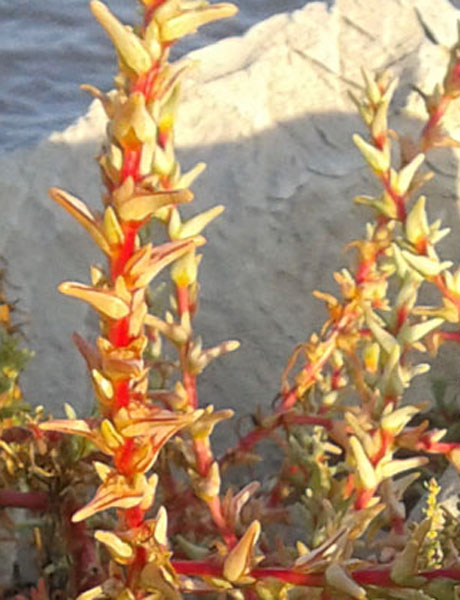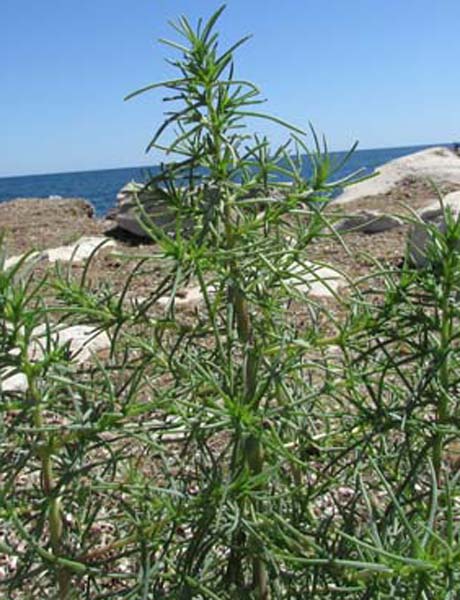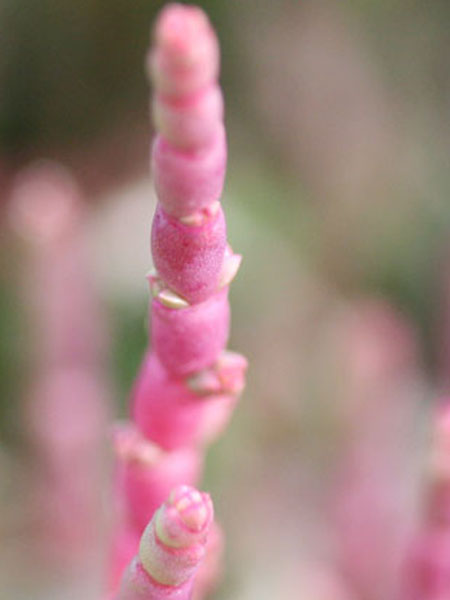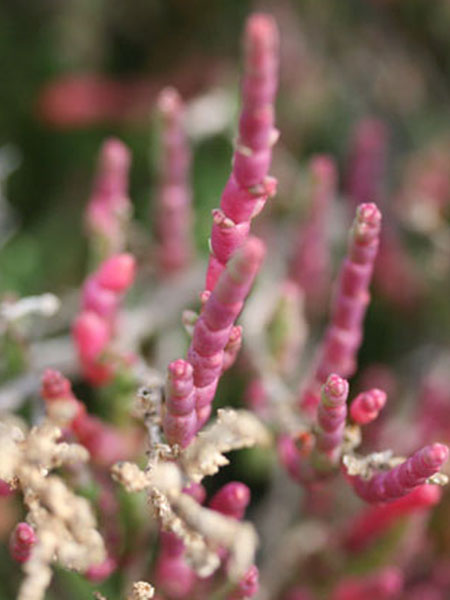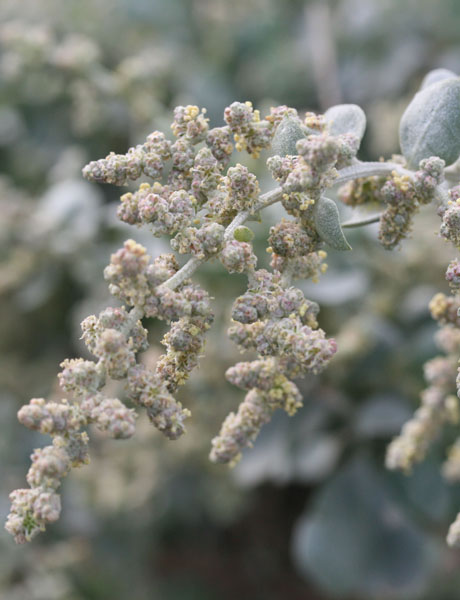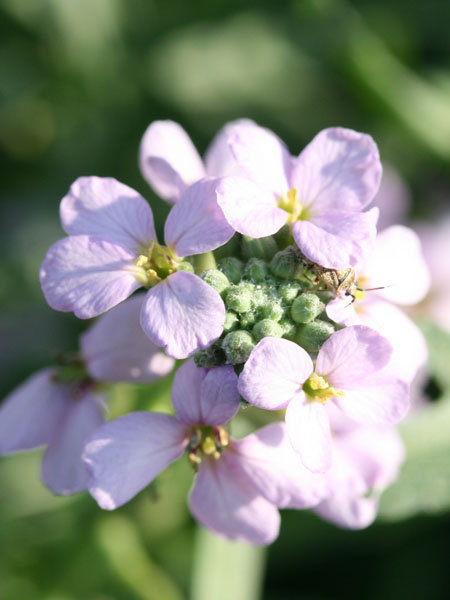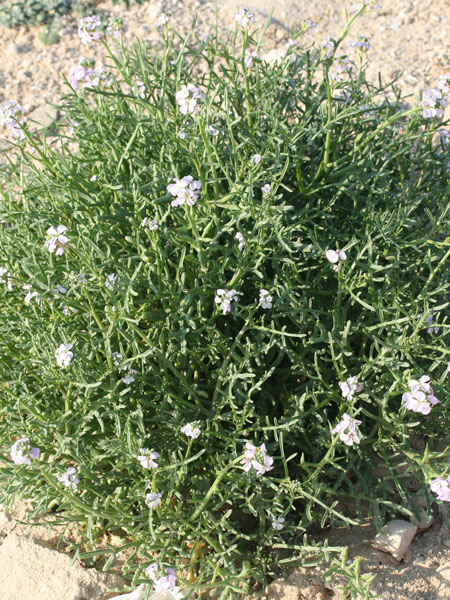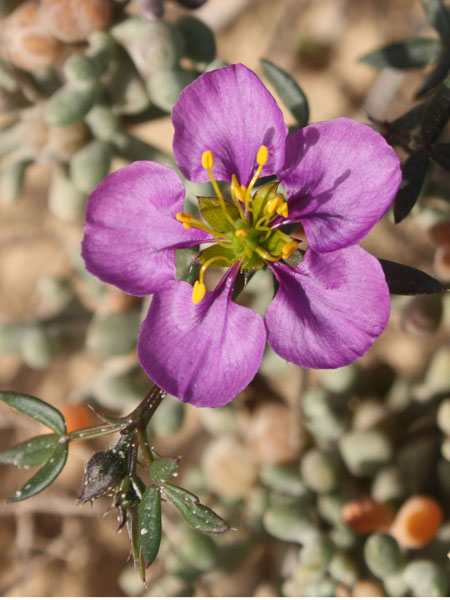Suaeda maritima
Kingdom : Plantae / النّباتات
Division : Spermaphyta / البذريات
Clade : Magnoliophyta or Angiospermae / مستورات البذور
Class : Eudicotyledoneae / ذات الفلقتين
Order : Caryophyllales / رتبة القرنفليات
Family : Amaranthaceae [Chenopodiaceae] /فصيلة السّرمقيات أوالرّمراميّة أو القطيفيّة
Genus : Suaeda
species : maritima
Chromosomes: 2n=36
Protologue
(L.) Dumort., Fl. Belg. 22 (1827)
Synonyms
Chenopodium maritimum L., Sp. Pl., ed. 1, 221 (1753). Chenopodium salsum L., Sp. Pl., ed. 1, 221 (1753). Suaeda salsa (L.) Pall., Ill. Pl. 52 (1803).
Common names
Tunisia Arabic English French Tamazight
السّويدة
سويداء بحريّة
Annual seablite
Soude maritime
Toxic
no
Edible
yes
Latex
no
Botanic description
Genus description
"Hermaphroditic bracts solitarious or glomerular, in long leafy spikes. Stamens 5. lanceolate Stigmas 3. Accrescent perigone, fleshy or dry, enclosing compressed, membranous fruit. Seed horizontal or vertical.
Species description
"A small herbaceous plant glabrous and branched. It is a glaucous green or reddish.
Stems erect. Leaves alternate, elongated cauline (1-3 cm.), glaucescentes, linear-semicylindrical, obtuse or acute, opaque, widened at the base, fleshy. Floral leaves exceeding the glomeruli, smaller, numerous, non-toothed, pointed, semicylindrical. Inflorescence Epi of cymes triflores. Fruits Achene Seeds Seed shiny, a little punctuated, Seed usually horizontal.
Botanic References
Pottier-Alapetite G. (1981). Flore de la Tunisie Angiospermes –Dicotylédones (Apétales- Dialypétale , Première partie). Imprimerie Officielle de la République Tunisienne (Eds), 61p. Edouard LE FLOC’H, Loutfy BOULOS et Errol VELA. (2010). Catalogue synonymique commenté de la FLORE DE TUNISIE. République Tunisienne, Ministère de l’Environnement et du développement durable, Banque Nationale de Gènes. 500 p www.theplantlist.org
Biology
Life form Annuel Type form Therophyte Photosynthesis C4
Phenology
Blooming
JanuaryFebruaryMarchAprilMayJuneJulyAugustSeptemberOctoberNovemberDecember
Fruiting
JanuaryFebruaryMarchAprilMayJuneJulyAugustSeptemberOctoberNovemberDecember
Map Localization
Ecology
Adaptation maritime sands. Salt bladder yes Invasive no
Geographical distribution
Localization Biocimatic stage Annuel pluviometry (mm) GPS Monastir (Skanès, Déc.2014 , 2014, 2016) Inferior semi-arid 331 35°46'42.61"N / 10°47'38.09"E 35°46'48.71"N / 10°47'4.76"E Cap Bon (Soliman Nov 2016) Superior semi-arid 444 36°44'11.32"N / 10°28'39.62"E
General uses
Sometimes it is consumed as a salad condiment, its ashes were formerly extracted from soda used in the manufacture of glass or laundry.
Medicinal uses
"Traditionally it has been used as a herbal remedy for treating hepatitis and reported to possess antiviral activities. In addition, studies on its neurological effects are beneficial.
NOTE : This website is not that of herbal medicine and assumes no responsibility for the negative effects of the use of plants. Seek advice from a professional before using a medicinal plant.
Systems / Organs / Effects
Circulatory System Hypoglycemic Liver
Test results
TPC DPPH ABTS+ FRAP Year mg GAE g-1 MS CI50 g ml-1 CI50 g ml-1 CE50 g ml-1 59,48± 4,01 42,78± 1,23 43,55± 0,24 368,02± 7,11 2016 Total Phenols content(TPC), Anti-radical potentialities against (DPPH, ABTS), Ferric reducing antioxidant power(FRAP)
Molecules : ADN / Proteins
Chromosomes : 36 Uniprot NCBI
Tunisian references
Oueslati S, Ksouri R et Abdelly C. (2008). Phenolic content and antioxidant activity of Suaeda pruinosa and Suaeda maritima halophytes. Tunisian–Japan on Society, Science & Technology, Sousse 9-11 Novembre, p. 14.
Other references
Benwahhoud M, Jouad H, Eddouks M, Lyoussi B. (2001). Hypoglycemic effect of Suaeda fruticosa in streptozotocin-induced diabetic rats. J. Ethnopharmacol. 76: 35-38. El-Hagrasi AMA, El-Desouky SK, El Ansari MA, Rabie AM.(2005). Investigation of lipid constituents of pods of Caesalpinia pulcherrima L., aerial parts of Suaeda pruinosa Forssk. and antimicrobial activity of their methanolic extracts. Bull. NRC Egypt. 30, 133–140. Shahi M, Saaghari M, Zandi Esfahan E, Jaimand K. Investigation on potential of Suaeda fruticosa as a source of edible oil. J. Bio. & Env. Sci.2013; Vol. 3, No. 12, p. 101-107.










